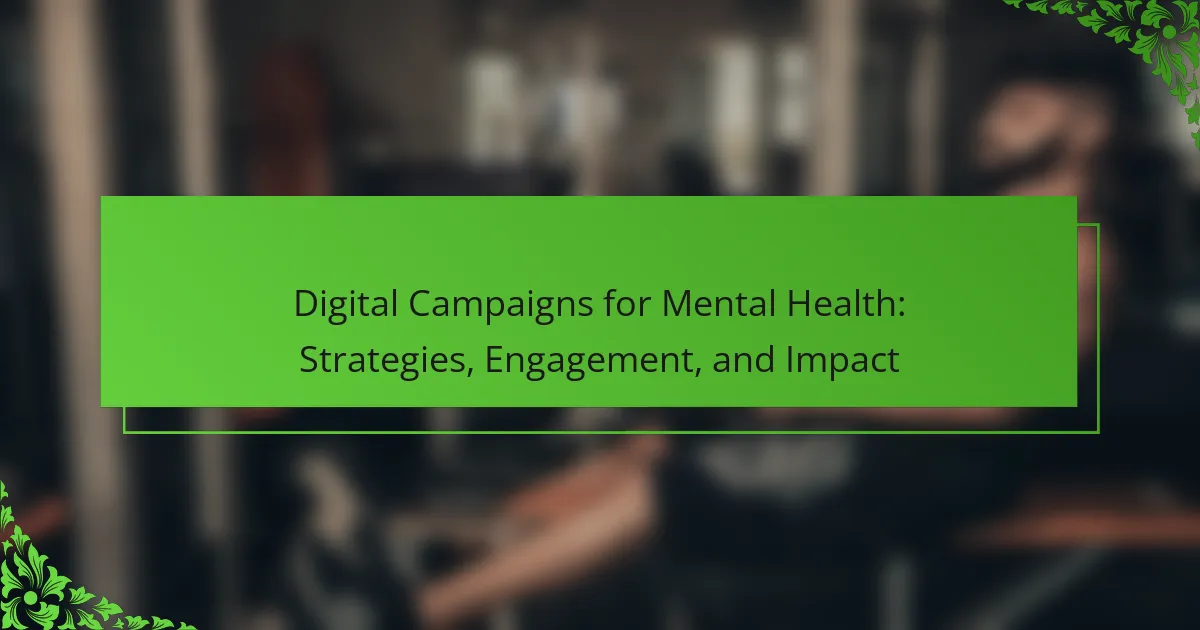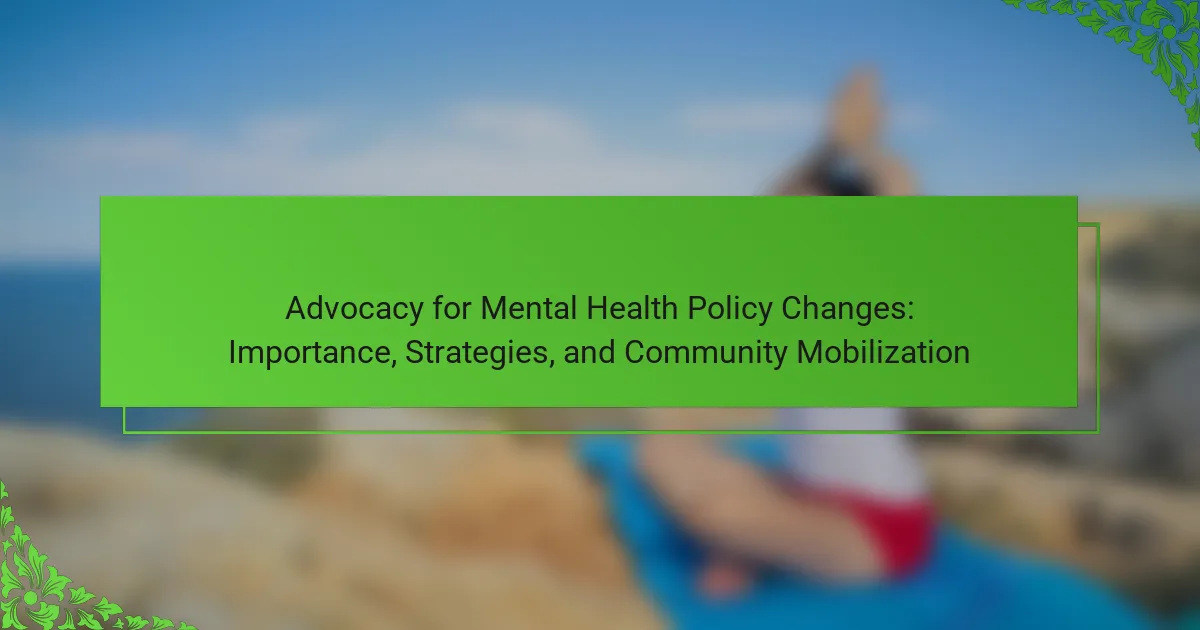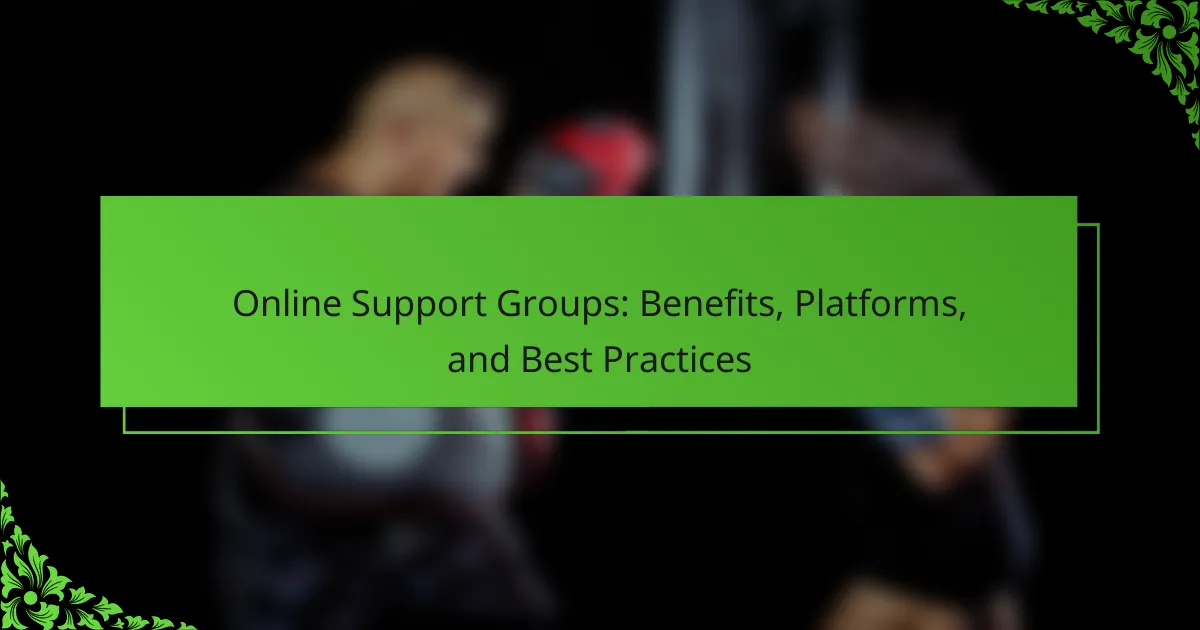Digital campaigns for mental health play a crucial role in raising awareness and reducing stigma. This article explores effective strategies using social media platforms, engaging content to drive participation, and key metrics for measuring impact. It also addresses challenges such as limited engagement and resource constraints, while offering insights on optimizing campaigns for diverse audiences.
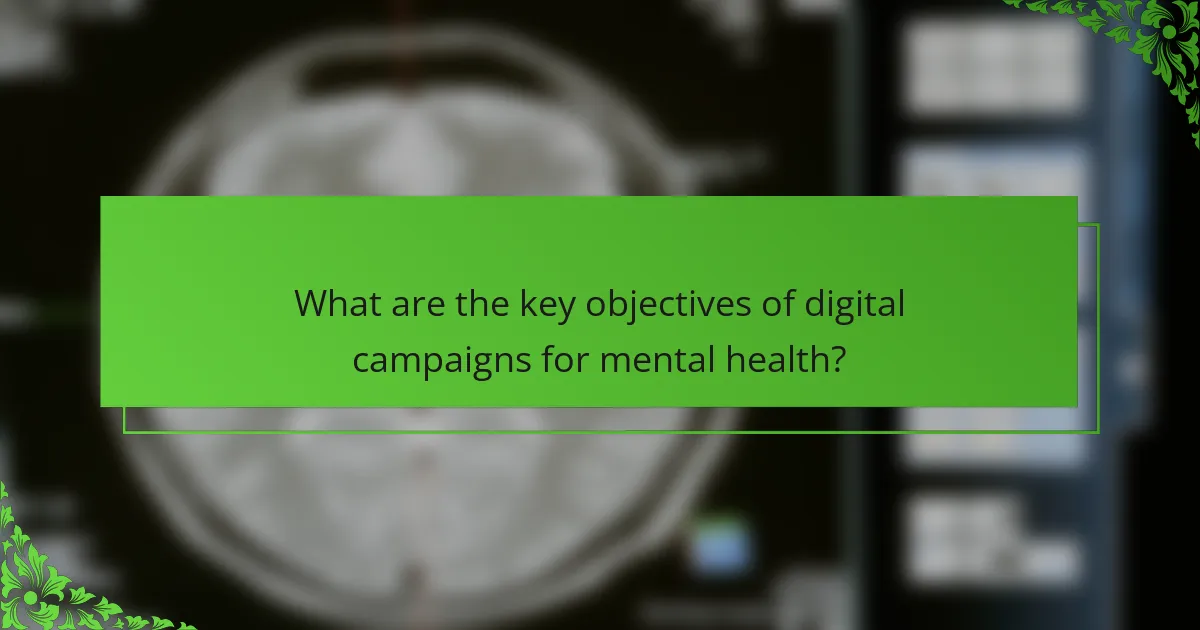
What are the key objectives of digital campaigns for mental health?
The key objectives of digital campaigns for mental health include raising awareness, reducing stigma, promoting resources, and encouraging engagement. These campaigns aim to connect individuals with mental health support and foster community dialogue. Effective strategies often utilize social media platforms for outreach and education. Engaging content can drive participation, leading to increased understanding and support for mental health initiatives.
How do awareness and education drive engagement?
Awareness and education significantly enhance engagement in digital campaigns for mental health. They inform audiences about mental health issues, reducing stigma and encouraging participation. Effective strategies include interactive content, educational webinars, and community outreach, which foster connections and motivate individuals to engage actively. By leveraging statistics, campaigns can highlight the importance of mental health, prompting greater involvement and support.
What role does stigma reduction play in campaign success?
Stigma reduction is crucial for the success of digital mental health campaigns. It enhances engagement, fosters open conversations, and encourages individuals to seek help. Campaigns that effectively address stigma can reach wider audiences and create lasting impact. Studies show that reducing stigma increases the likelihood of individuals accessing mental health resources, thereby improving overall community well-being.
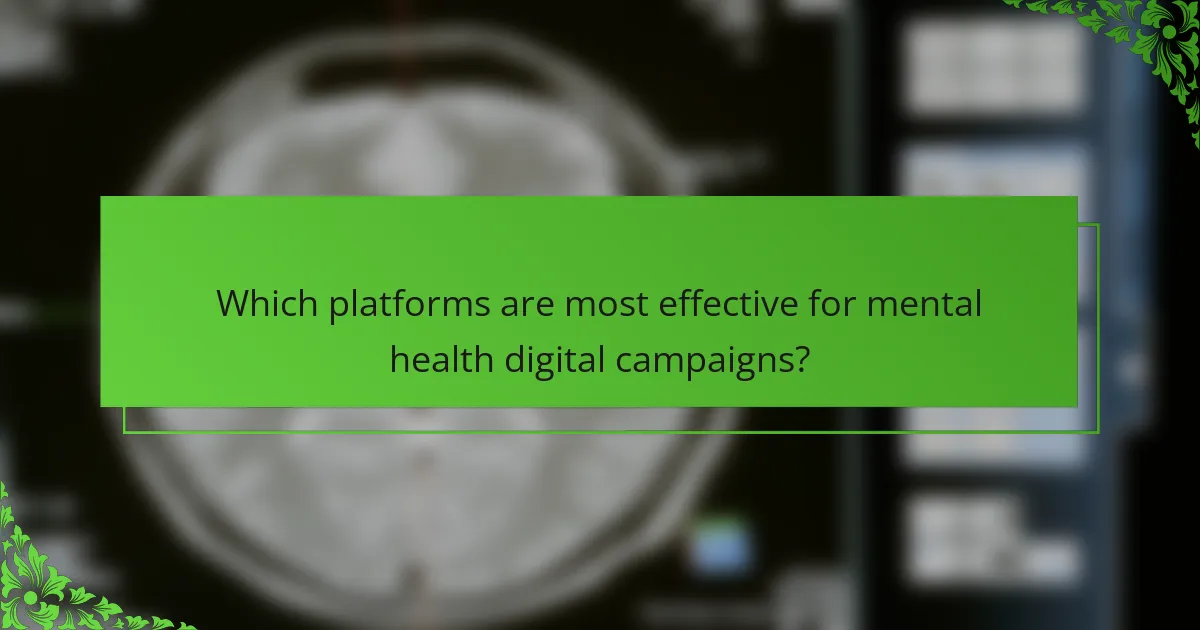
Which platforms are most effective for mental health digital campaigns?
Social media platforms, particularly Facebook, Instagram, and Twitter, are most effective for mental health digital campaigns. These platforms facilitate community engagement and allow for targeted messaging. Facebook’s diverse user base enables broad outreach, while Instagram’s visual content fosters emotional connection. Twitter’s real-time interaction enhances timely discussions. Research indicates that campaigns on these platforms can significantly increase awareness and reduce stigma related to mental health issues.
How does audience demographic influence platform choice?
Audience demographics significantly influence platform choice in digital campaigns for mental health. Different age groups, genders, and socioeconomic backgrounds engage with various platforms uniquely. For instance, younger audiences prefer Instagram and TikTok, while older demographics lean towards Facebook. Tailoring content to these preferences enhances engagement, ensuring messages resonate effectively. Understanding these nuances can lead to more impactful campaigns that address specific needs of diverse audience segments.
What are the advantages of social media for mental health messaging?
Social media enhances mental health messaging by increasing awareness, fostering community support, and providing accessible resources. These platforms allow for real-time engagement, enabling campaigns to reach diverse audiences effectively. For instance, interactive content can encourage participation and reduce stigma. Research indicates that social media can improve mental health outcomes by facilitating connections and sharing personal experiences.
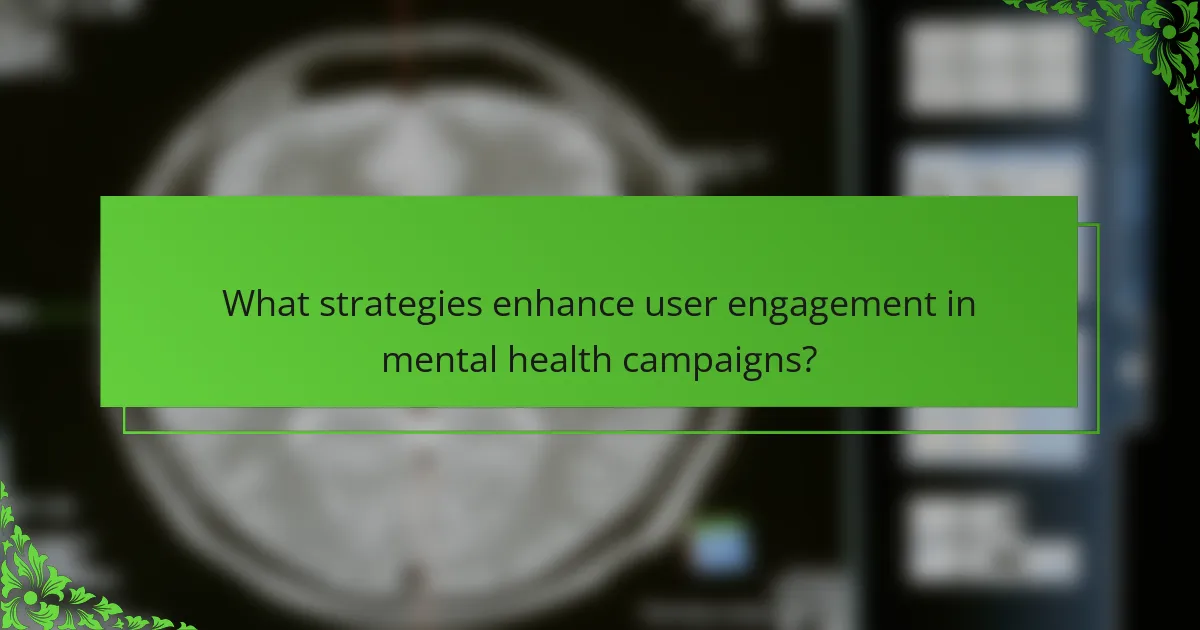
What strategies enhance user engagement in mental health campaigns?
Engaging users in mental health campaigns requires targeted strategies. Utilize storytelling to create emotional connections. Leverage social media platforms for wider reach and interaction. Incorporate interactive content like quizzes to promote participation. Use data-driven insights to tailor messages that resonate with specific demographics.
How can storytelling be leveraged to connect with audiences?
Storytelling can effectively connect with audiences by evoking emotions and fostering empathy. Engaging narratives in digital mental health campaigns create relatable experiences, encouraging individuals to share their stories. This approach enhances community support and reduces stigma. Additionally, data shows that storytelling increases campaign reach and engagement, making it a powerful tool in mental health advocacy.
What interactive elements boost participation rates?
Interactive elements that boost participation rates in digital mental health campaigns include polls, quizzes, live chats, and social media challenges. These tools encourage user engagement and create a sense of community. For example, polls can gather opinions while quizzes provide personalized feedback. Live chats offer real-time support, enhancing connection. Social media challenges promote sharing, amplifying reach and impact. Integrating these elements fosters active involvement, ultimately improving campaign effectiveness.
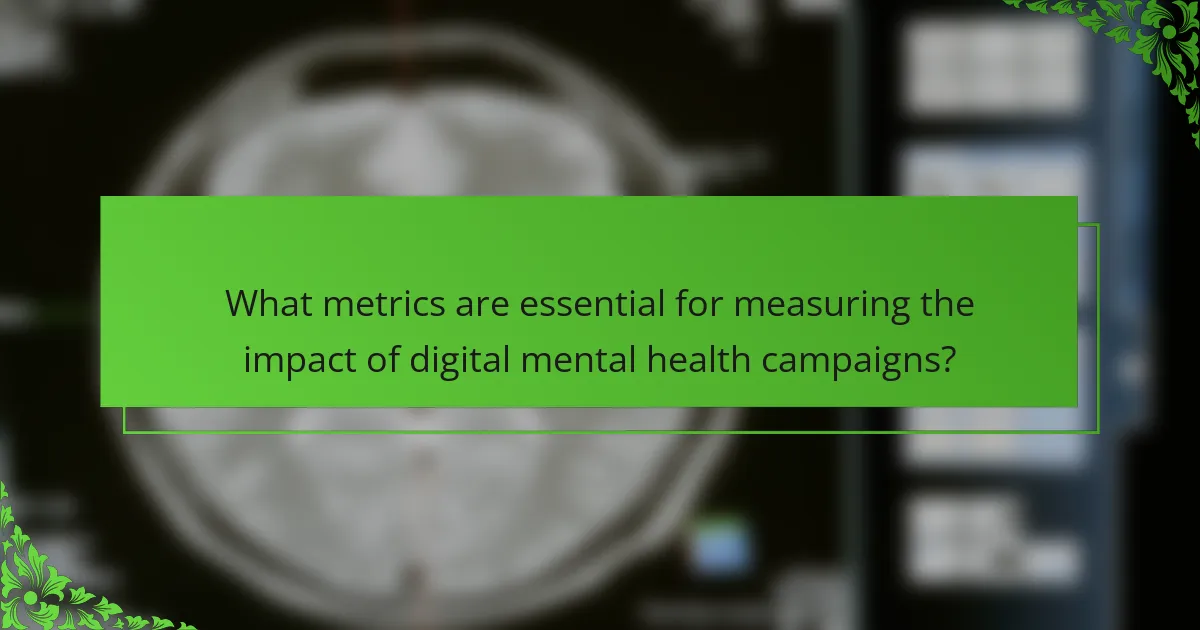
What metrics are essential for measuring the impact of digital mental health campaigns?
Key metrics for measuring digital mental health campaign impact include engagement rates, reach, conversion rates, and user feedback. These metrics reveal how effectively campaigns connect with audiences and promote mental health resources.
Engagement rates track interactions like shares and comments, indicating audience involvement. Reach measures how many individuals see the campaign, reflecting its visibility. Conversion rates assess the number of users taking desired actions, such as signing up for resources. User feedback provides qualitative insights into the campaign’s perceived effectiveness and areas for improvement.
Monitoring these metrics allows for data-driven adjustments to optimize future campaigns and enhance their overall impact on mental health awareness.
How do engagement rates correlate with campaign effectiveness?
Engagement rates significantly influence the effectiveness of digital campaigns for mental health. Higher engagement often correlates with increased awareness and participation in mental health initiatives. Studies show that campaigns with engagement rates above 10% result in a 30% boost in community outreach. This highlights the importance of interactive content, such as polls and discussions, which enhance user involvement. Effective strategies include leveraging social media platforms to foster connections, thereby amplifying campaign impact.
What tools can be used for data analysis in mental health outreach?
Data analysis in mental health outreach can utilize various tools such as Google Analytics, SurveyMonkey, and Tableau. These tools help track engagement, analyze survey data, and visualize trends. Google Analytics provides insights into website traffic and user behavior, while SurveyMonkey facilitates data collection through surveys. Tableau offers advanced data visualization capabilities, making it easier to interpret complex data sets. Each tool contributes to understanding the effectiveness of digital campaigns in promoting mental health awareness.
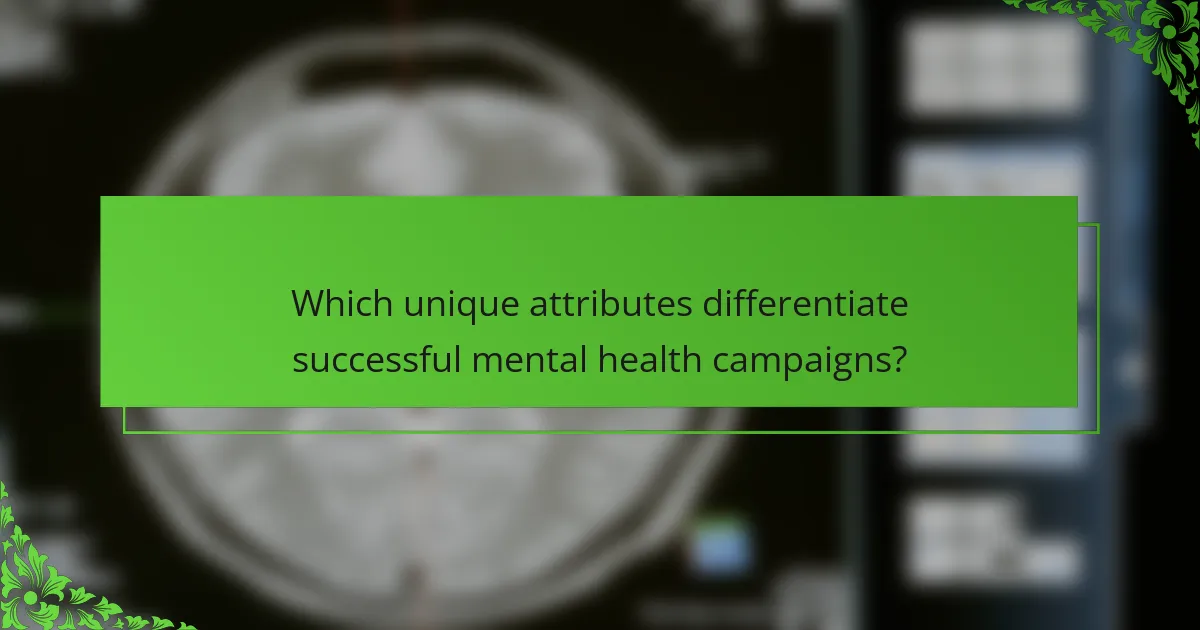
Which unique attributes differentiate successful mental health campaigns?
Successful mental health campaigns are differentiated by their unique attributes, including targeted messaging, community involvement, and data-driven strategies. Targeted messaging resonates with specific demographics, enhancing engagement. Community involvement fosters trust and relatability, while data-driven strategies ensure effectiveness and adaptability. These attributes create impactful campaigns that resonate with diverse audiences.
How do partnerships with local organizations enhance credibility?
Partnerships with local organizations enhance credibility by leveraging established trust within communities. Collaborating with trusted entities provides validation and fosters authentic engagement. This approach boosts awareness, encourages participation, and amplifies the impact of digital campaigns for mental health. As a result, outreach efforts become more effective and resonate deeply with the target audience.
What innovative content formats have shown higher impact?
Innovative content formats that have shown higher impact in digital campaigns for mental health include interactive videos, podcasts, and live webinars. These formats enhance engagement by fostering community and providing relatable content. For example, interactive videos allow users to explore topics at their own pace, increasing retention. Podcasts offer accessible storytelling, while live webinars facilitate real-time discussions with experts. These formats align well with the unique attributes of mental health campaigns, emphasizing personal connection and support.
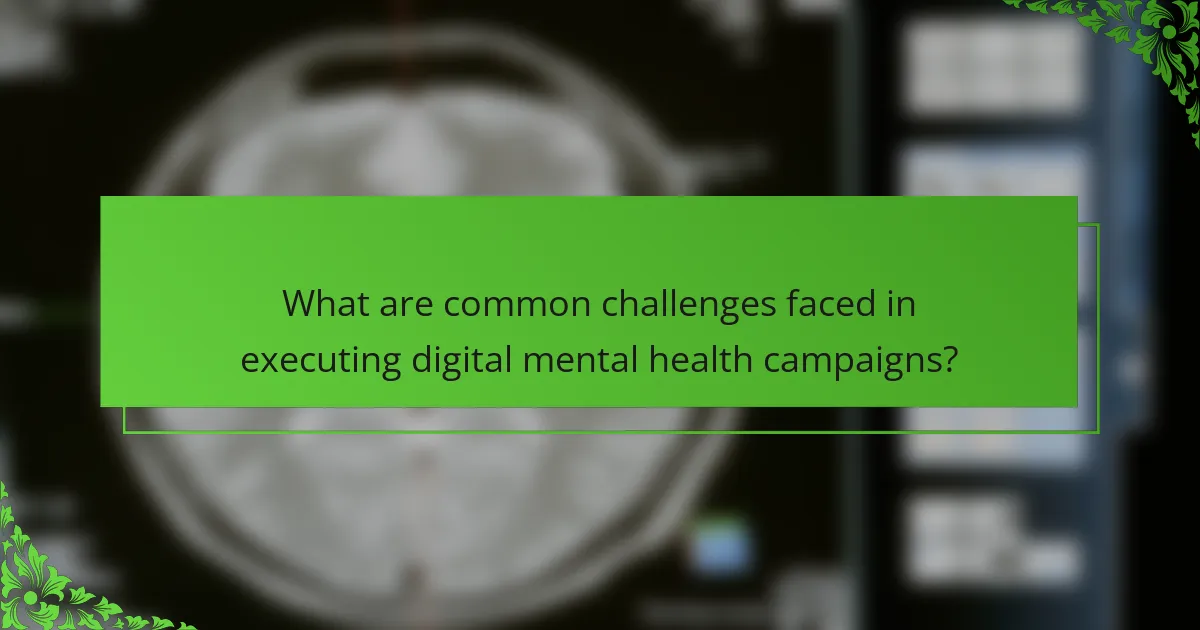
What are common challenges faced in executing digital mental health campaigns?
Digital mental health campaigns often face challenges such as limited engagement, resource constraints, and stigma. These factors can hinder outreach and effectiveness.
Limited engagement occurs when target audiences do not interact with the content, reducing campaign impact. Resource constraints, including funding and personnel, can restrict campaign reach and quality. Stigma surrounding mental health may prevent individuals from seeking help or participating in campaigns.
Additionally, measuring campaign effectiveness can be difficult due to a lack of clear metrics and data collection methods. Ensuring accessibility across diverse populations is another challenge, as not all individuals have equal access to digital platforms.
Lastly, maintaining privacy and security while engaging users is crucial, as concerns about data protection can deter participation. Addressing these challenges is essential for successful digital mental health initiatives.
How can misinformation be addressed effectively?
Digital campaigns can effectively address misinformation by promoting accurate information, fostering community engagement, and utilizing trusted voices. Engaging content can challenge false narratives and provide mental health resources. Collaborations with mental health professionals enhance credibility and reach. Regularly updating information ensures relevance and accuracy, building trust among audiences.
What budget constraints typically affect campaign planning?
Budget constraints for digital mental health campaigns often include limited funding, resource allocation, and varying costs of digital platforms. These financial limitations impact strategy development and audience engagement. Organizations must prioritize essential activities and measure the impact of their campaigns effectively. Additionally, unforeseen expenses can arise, requiring flexibility in planning.

What best practices should be followed for optimizing digital mental health campaigns?
To optimize digital mental health campaigns, focus on clear messaging, audience engagement, and data-driven strategies. Effective practices include utilizing targeted social media ads, collaborating with mental health professionals, and incorporating user feedback. Engaging storytelling enhances relatability, while analytics help measure impact and adjust tactics. Prioritize accessibility and inclusivity to reach diverse populations.
How can feedback loops improve future campaign strategies?
Feedback loops enhance future campaign strategies by providing data-driven insights into audience preferences and behaviors. They allow marketers to adjust messaging and tactics in real-time, improving engagement. Regularly analyzing feedback helps identify effective elements and areas needing improvement, ultimately leading to more impactful campaigns. For instance, surveys and social media interactions can reveal what resonates with the audience, enabling tailored content that addresses mental health needs effectively. This iterative process fosters a deeper connection with the audience, ensuring campaigns remain relevant and effective.
What are the common pitfalls to avoid in campaign execution?
To avoid common pitfalls in executing digital campaigns for mental health, focus on clear messaging, audience understanding, and effective engagement strategies. Misalignment with audience needs can lead to disengagement.
1. Lack of clear objectives: Define specific goals to measure success.
2. Ignoring audience feedback: Actively seek and incorporate user input.
3. Inconsistent messaging: Maintain a cohesive narrative across all platforms.
4. Underutilizing data analytics: Use insights to refine strategies and improve outcomes.
5. Neglecting platform differences: Tailor content to suit each social media platform’s unique characteristics.
